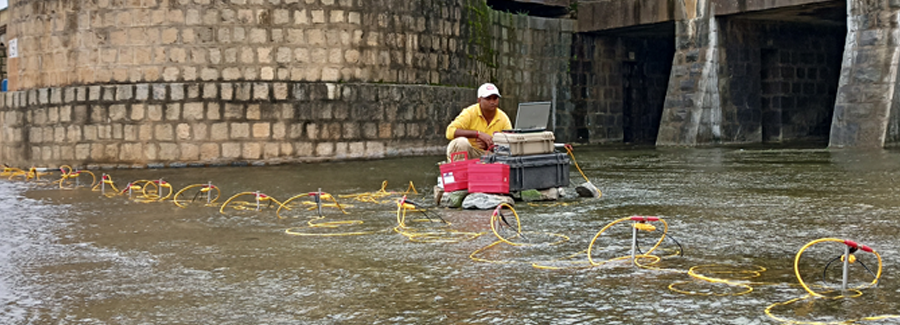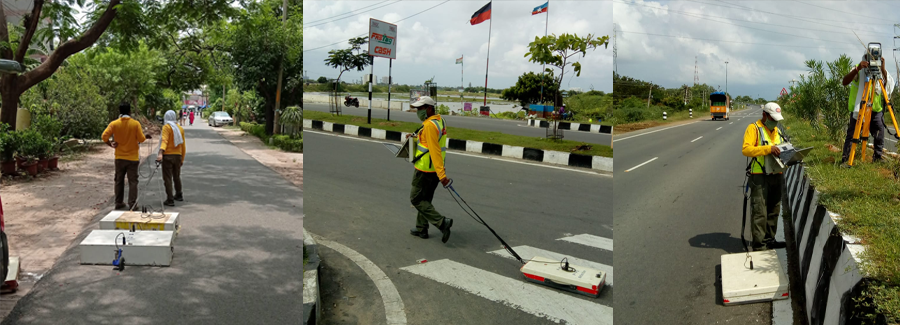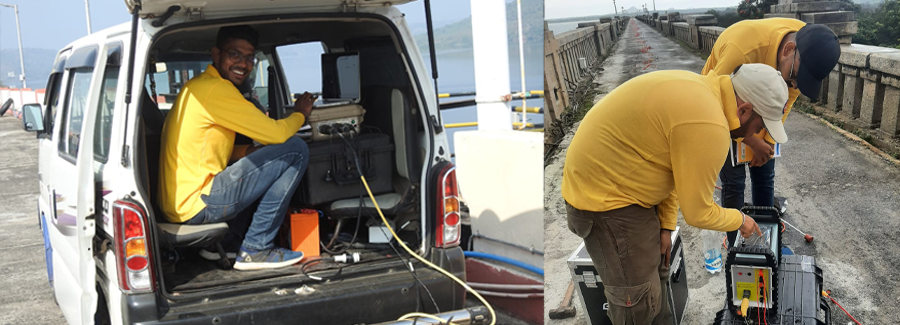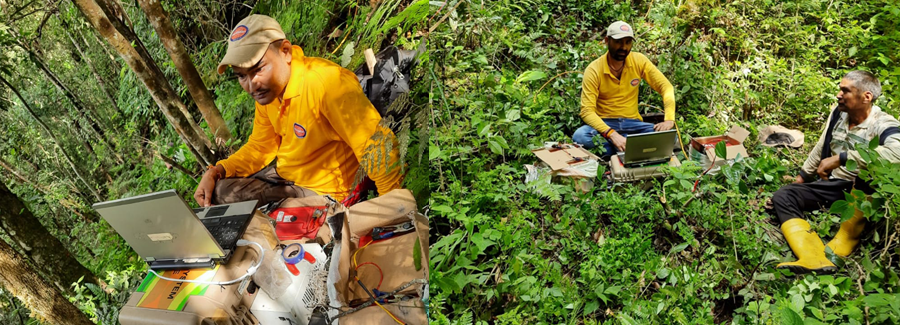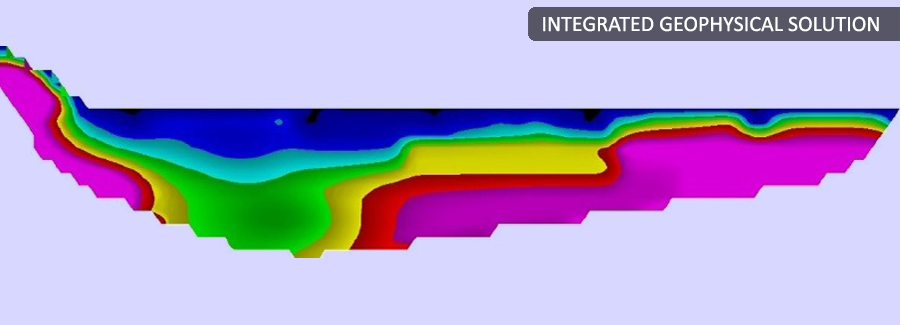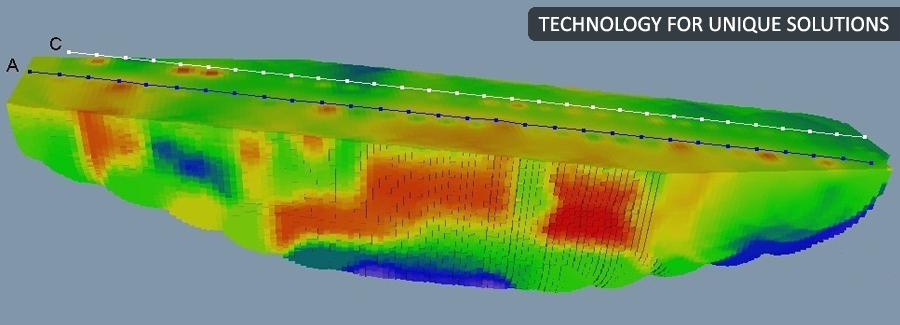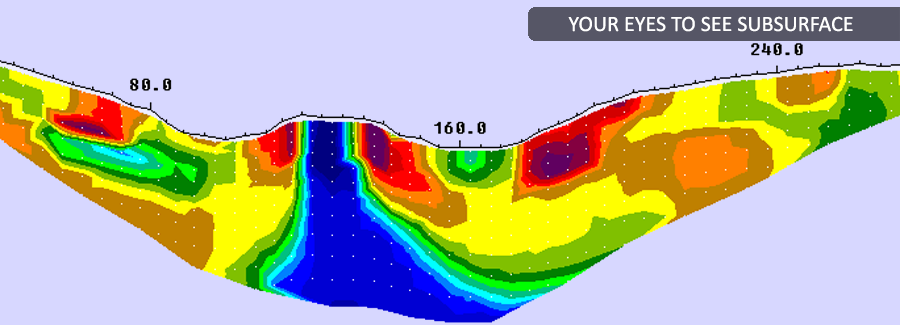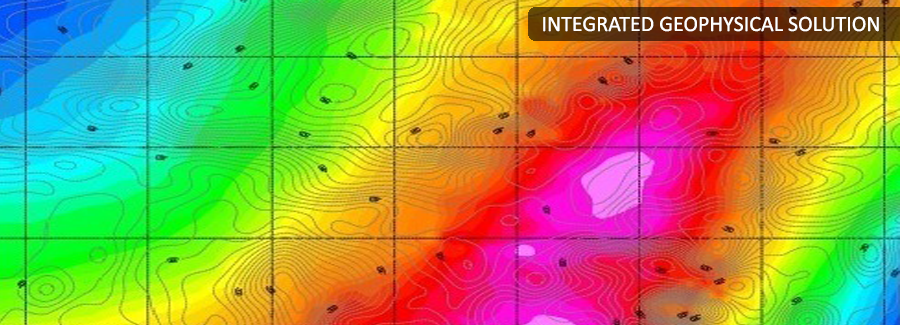Gravity and Magnetic Surveys
Back to Techniques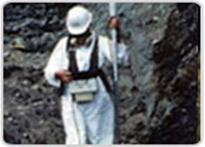
The electromagnetic (EM) technique is based on the response of the ground to the propagation of an electromagnetic field created by the survey instrument. The The EM survey technique has a number of different applications and can be applied to both reconnaissance and detailed ground investigations. Main components of the EM instrument are a transmitter (for the generation of primary field) and receiver (measurement of the induced secondary field).
Typical applications are:
- Regional geological mapping
- Oil and gas exploration
- Mineral exploration
- Sediment thickness studies
- Archaeological surveys
- Void detection
Magnetic method is a passive method since it only measures the existing magnetic field strength, it does not amplify or modify it in any way. It is most often used in areas with minimal urban infrastructure, which tends to make interpretation difficult. A magnetometer can measure the total magnetic field strength passing through its sensor through the application of the principles of nuclear physics and quantum mechanics. Different types of magnetometer exist, each with different levels of precision and resolution. Most common are proton precession magnetometers, with cesium vapor magnetometers used for more specialized applications such as airborne surveys
Typical applications are:
- Location of buried ferromagnetic objects
- Archaeology
- Mineral exploration
- Geological mapping



